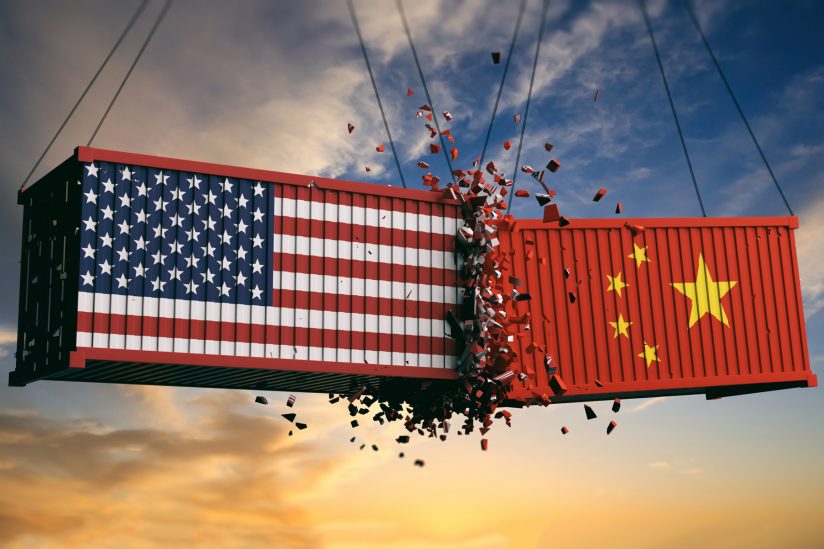Global trade is accelerating, and along with global growth is showing some of the strongest performance since the global financial crisis. This is particularly true in Asia, where trade is a positive contributor to growth across most of the region. Yet trade disputes seem on the rise and protectionist rhetoric may be turning into action. The risks are rising that these trade frictions may have a dampening effect on local markets, especially going into 2019, when there are fewer drivers of growth acceleration.
Trade flows have been resilient to protectionist rhetoric over the last year and indeed, global trade is again (slightly) outpacing global growth, after years of merely tracking it. Is the trend sustainable? Perhaps not. There are several reasons to be cautious about future trade growth, not least the ongoing trade protectionist skirmishes which seem to be gathering pace and shifting from 2017 rhetoric into action, admittedly targeted.

2018 looks to be a year of increasing trade friction with some additional tariffs and countervailing duties gumming up some of the systems of global trade, increasing some uncertainty for business, contributing to the adjustment via the exchange rate channel and shifting some costs from consuming nations to producing one,
Why 2018 when Ongoing trade reviews launched last year are due to be completed in coming months, forcing a decision whether to re-act adding uncertainty for investors. Market actors should prepare for a series of trade skirmishes as the U.S. government continues to apply selected tariffs, especially those targeting China, other Asian nations and Canada.
The improvement in global trade is most visible in Asia, where exports area and to a lesser extent Europe, This reflects the convergence of global growth expansion, the lagged benefit of expansionary monetary policy and absorption of spare capacity. Continuing this stronger performance will require some increase in investment and final demand. It remains to be seen if the increase in growth is contributing to the sort of productivity gains needed to boost potential output. Uncertainty about the rules of the game especially an increase in tariffs or risk of domestic policy changes would undermine this trend.
“2018 is set to be another active year for trade negotiations which is likely to change some of the rules of the game, perhaps for the better.”–Rachel Ziemba
Key nodes of negotiation are centered around Japan, Mexico and the EU all of which are actively negotiating a set of trade agreements trying to reinforce new trade rules, countering in part Chinese policies. Key to watch is the Comprehensive Transpacific Partnership (TPP-11, ex United States) as well as the RCEP (a broader ASEAN/China led initiative) and several bilateral agreements.
Flashpoints To Watch
U.S. trade policy towards China: Key decisions on section 301 and section 232 are due in coming weeks. Following the recent tariff decisions on solar panels and washing machines, the administration may react to other cases brought by private companies, and some “self-intiated” ones. These may remain targeted across sectors, but are likely to raise costs to U.S. consumers and may add uncertainty about production costs.
NAFTA renegotiations: trilateral discussions are scheduled to continue through the first quarter and likely through mid-year. Walking away from the table, feared by some seems unlikely, and indeed the risks are increasingly titled towards negotiations dragging on until after the self-imposed deadline. While the “charm-offensive” waged by Canadian and Mexican governments and key U.S. businesses suggests some form of NAFTA will survive the negotiations, it may be a weaker one without meaningful dispute settlement and subject to renewed negotiations. Meanwhile ongoing issues that were not solved via such institutions such as lumber, dairy. Other trading partners should watch to see if measures on currency and resources are added, since this may form a template for some trading partners. Expect some intermittent pressure on local currencies (MXN), limiting the scope for monetary policy space.
Korus discussions: The U.S. and South Korean authorities have begun the (re)negotiations of the Korea-U.S. free trade agreement. These discussions may be upended by the ongoing negotiations with North Korea over the nuclear program and will likely be negatively affected by some of the recent tariffs.
FX policy measures: The twice annual U.S. Treasury report is due out in April, and the chances are rising that some Asian countries will meet 2 out of the three criteria for the designation. Asian FX reserves are rising, with China, South Korea, Thailand among countries arguably intervening to keep their currencies weaker. Its not escaped U.S. notice that the increase in Asian exports to the U.S. coincided with weaker currencies, though the U.S, administration may focus first on rhetorical approaches (such as Treasury Secretary Mnuchin’s recent comments). Ultimately the dollar is likely to be driven more by monetary and fiscal differentials and the savings and investment patterns of the United States.
Specific Roadblocks
Spoilers from sanctions and nuclear talks with the North Koreans: The U.S. national security focus on containing the North Korean nuclear threat is repeatedly influencing the trade discussions with North East Asia. The North Korean intransigence suggests that U.S. authorities are likely to continue increasing economic sanctions, including on Chinese entities. If larger entities are targeted, including in the financial sector, the Chinese might see the response as disproportionate and retaliation is possible. Recent policies remain targeted, but risks look to be rising.
Ongoing and overlapping negotiations within Asia including the TPP and RCEP are likely to shape new rules and aim to set new standards. While trade agreements alone do not drive trade, the uncertainty around policies can encourage delays in investment decisions.
All in all, with the global economy near a near-term peak and political pressures increasing to deliver on promises, trade protectionist threats remain in place and could be one of several factors weighing on growth prospects in 2019.








